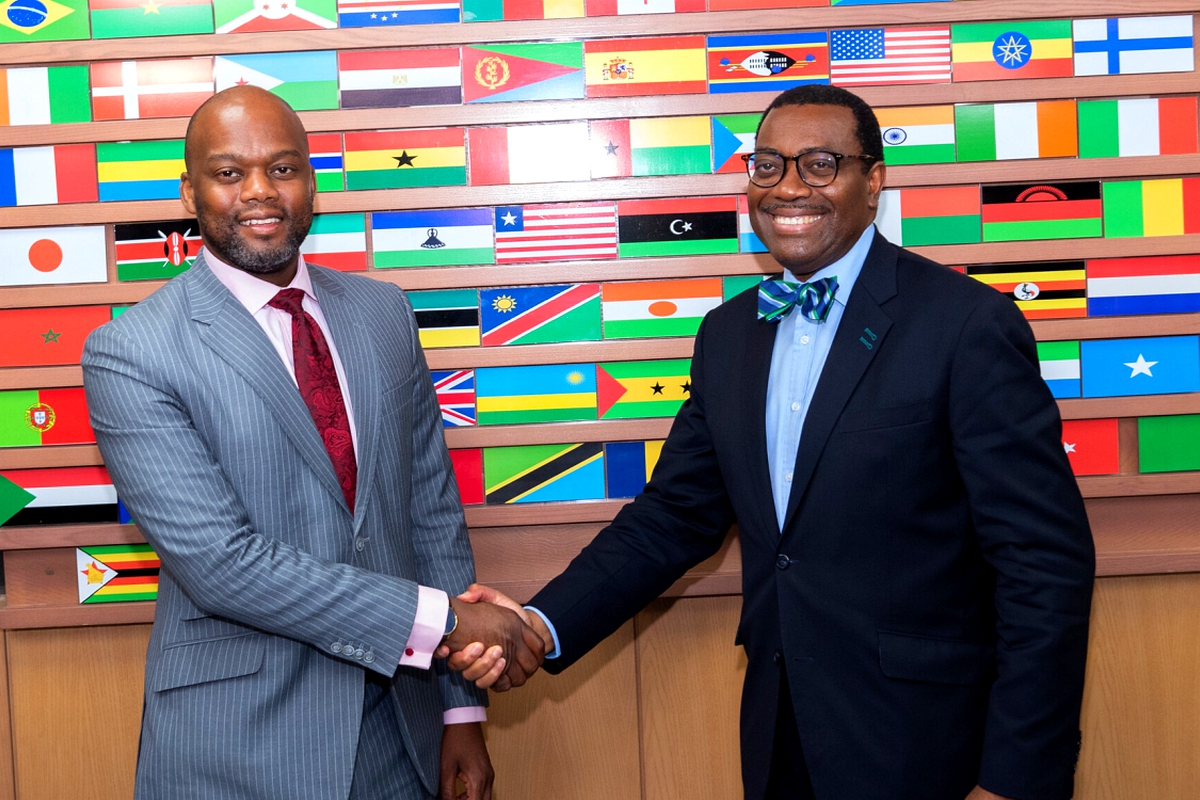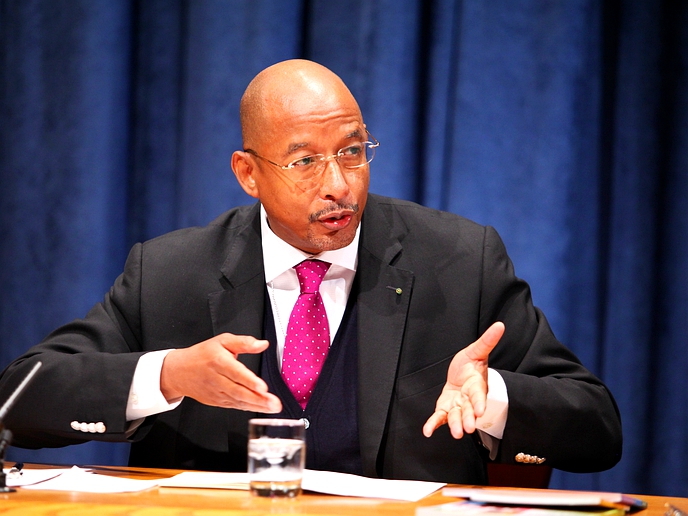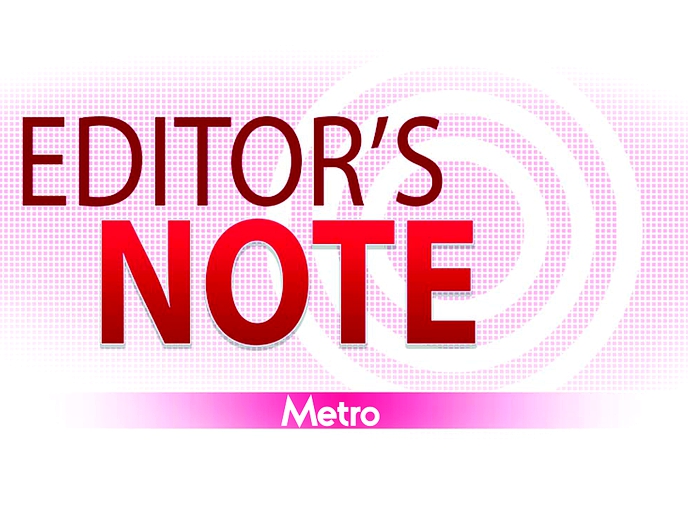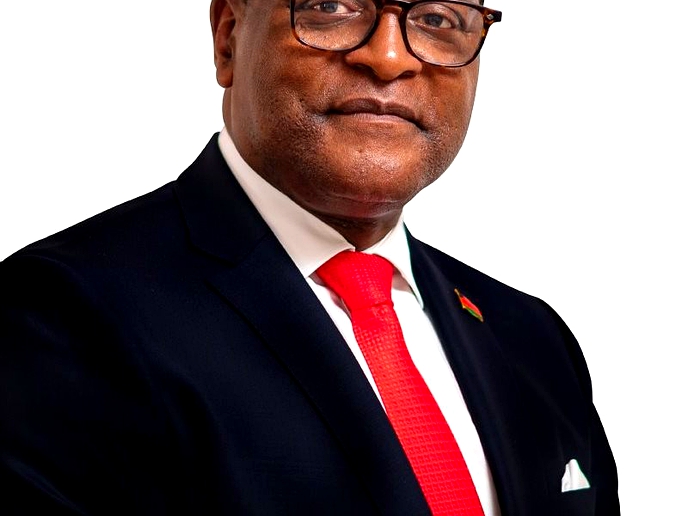In Part 2 of the interview with Africa Renewal’s Kingsley Ighobor, the President of the African Development Bank (AfDB) Akinwumi Adesina says investments in inter-state roads, rails, bridges, energy, broadband, and other regional infrastructure will boost trade and make Africa an investor’s dreamland. These are excerpts.
africa
Dec. 5, 2022
BY KINGSLEY IGHOBOR, AFRICA RENEWAL
5 min read
Ongoing regional infrastructure will boost free trade in Africa

President of the African Development Bank Group, Dr. Akinwumi A. Adesina shaking hands with Wamkele Keabetswe Mene, Secretary General of the African Continental Free Trade Area (AfCFTA) Secretariat.
Story highlights
There is an infrastructure challenge in Africa. Annually, there is a funding gap of up to $100 billion for infrastructural development. Yet the African Continental Free Trade Area, one of the biggest projects on the continent currently, cannot succeed without adequate infrastructure. How does Africa address this funding gap?
The AfDB has been investing heavily in infrastructure in Africa. In the last six years alone, we have invested well over $44 billion in infrastructure - from roads to airports, seaports, digital infrastructure, water and sanitation and energy infrastructure.
There's no institution in the world that is investing more in African infrastructure than the AfDB. Infrastructure is our forte.
Now, for the African Continental Free Trade Area, yes, we need a lot more infrastructure. But let's see some of the things we've done already to promote regional trade.
From Addis [Ethiopia] all the way to Nairobi and Mombasa [Kenya], the AfDB put in a billion dollars on the 1,000-kilometre road. That highway is almost completed. It will allow Ethiopia to connect 20 per cent of its exports to Kenya through the Mombasa port. It will increase trade between both countries by 400 percent.
Another example: In Southeast Africa, you have the Nacala Corridor (the rail and port of Nacala) including 1,700 kilometers of road and rail, linking Mozambique to Malawi and Zambia. And guess what it has done? It has reduced the cost of trade by 15 to 20 per cent.
Another project, which I'm super excited about, is the Kazungula Bridge, which links Botswana and Zambia over the Zambezi River. It used to take 14 days to make that journey; now, it takes one hour because of that investment.
And we just connected Senegal and Gambia. They're just next to each other but there's no bridge between them. We're doing that.
So, infrastructure financing for us, going forward, should have to be a public-private partnership, with increased participation of the private sector.
I chair the board of Africa50, which we set up as a private company that will be doing infrastructure in Africa. One of the things they're doing right now is linking the Democratic Republic of the Congo to the Republic of Congo. So, they are going to be working with us at the AfDB with an investment of $400 million to connect those two countries.
We are also investing in digital infrastructure, using submarine cables to provide access to the internet and broadband.
That’s quite a lot, but more is needed. How do we raise more money for this?
Enjoy our daily newsletter from today
Access exclusive newsletters, along with previews of new media releases.
We're going to do more on infrastructure in a way that does not put most of the cost on the government budget because of the debt distress that quite a number of countries are in.
So, infrastructure financing for us, going forward, should have to be a public-private partnership, with increased participation of the private sector.
How do we raise more money for it? Take a look at the sovereign wealth funds and the pension funds in Africa, all that together is roughly $2 trillion.
You're talking about an infrastructure gap of $68 billion to 108 billion. That is minuscule compared to the size of the sovereign wealth fund that we have. So, we will need to mitigate the risk for the sovereign wealth fund and other insurance investors so they can take part of their portfolio and invest in infrastructure.
Risk is something that you manage… A lot of the talk about Africa is perceived risk, not real risk.
President Macky Sall of Senegal and Chair of the African Union said at the UN General Assembly that poor credit rating for Africa was making the continent a high-risk region. Should Africa negotiate with these western credit-rating institutions to devise a new set of parameters for assessing the continent’s creditworthiness?
Risk is something that you manage. And let me talk to you about the difference between real risk and perceived risk.
A lot of the talk about Africa is perceived risk, not real risk. Take a study by Moody’s Analytics, a 10-year studylooking at cumulative losses of regions in terms of infrastructure debt. And guess what they found. They found that Africa was better than Eastern Europe. Africa was better than many Latin American countries. Africa was second only to the Middle East. So when people think it's risky to invest in Africa, it's not backed by data. That's just perception.
So it’s actually less risky to invest in Africa than in some other many regions?
You can imagine; we are number two, after the Middle East, which includes Saudi Arabia and others.
The other point is, what motivates people to invest somewhere? You ask the ones that bring the cash what they think. A study by the African Private Equity and Venture Capital Association found that more than 60 per cent of limited partners would like to invest in Africa, and more than 30 per cent of them believe that they would be able to double, maybe triple, their returns. That tells me something: perception is not reality.
The AfDB has been investing heavily in infrastructure in Africa. In the last six years alone, we have invested well over $44 billion in infrastructure
And so, if in fact the reality is that we are not as risky as people perceive, then Africa should not be penalized.
At AfDB, we have a slew of instruments we deploy to support African countries in terms of mitigating the risk they face and supporting a better business and investment environment that will attract the private sector into Africa.
I think as we manage our economies better, and we are trying a lot, as we show the viability of investments in Africa, and we are not having a lot of losses, as we are able to handhold institutional investors to invest more in Africa, the risk profile will change because the mindset will change.
At the AfDB, we have the Africa Investment Forum, which helps bring investments to Africa. We have been running it for three years. We’ve mobilized deals and investment commitments worth over $110 billion.
So Africa is bankable.
For more information on COVID-19, visit www.un.org/coronavirus
Tailored for you






